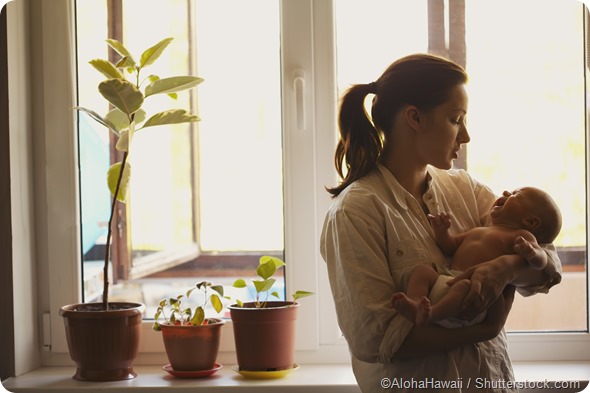Why Do Babies Cry?
Babies cry and a lot. It’s just something they all do. Arguably, some are less fussy than others, but the fact remains that it’s impossible to find a baby who will not cry at some point. Crying is a sign that a baby is alive when he or she is born. This process allows for air to enter their lungs for the first time in their lives.
From birth onwards, babies quickly learn to use their cry as a primary communication tool in the outside world. This may be particularly demanding for parents, especially those who may have had unrealistic expectations about their infant.

Newborns, for quite some time, will not be able to have a real conversation and this makes it easy for people to overlook the reality that babies too have needs. They are just unable to communicate those needs in a way that their caretakers could understand.
As we can well imagine, they need to eat, be comfortable and, above all, kept as healthy as possible and free of any morbidity. Babies, like all humans, require attention and affection and they also can experience emotions, like fear, pain, and anger. When their needs are not met, most of them will cry, because that’s their greatest weapon from a communication standpoint.
The first cry in the moments after birth
For anyone in a delivery room, the absence of crying when the baby arrives is particularly worrying especially as time elapses. It is a signal that something may be gravely wrong. Before a child is born, the blood is oxygenated via the placenta. During intrauterine life, our blood circulates differently.
There are several bypasses or unique features, namely, the ductus venosus (i.e. shunt for oxygenated placental blood to bypass the liver), ductus arteriosus (i.e. shunt for oxygenated blood to bypass non-functioning amniotic fluid-filled lungs), and foramen ovale (i.e. passage for oxygenated blood to go from right atrium to the left atrium).
In addition to the shunts, the pulmonary vessels are constricted in utero. At birth, all of the shunts are closed and the intense pulmonary vasoconstriction is reversed. This reversal and closing of shunts happens within minutes and are triggered by reflexes. The cold extra-utero environment and being born wet causes great discomfort to the newborn and he or she attempts to cry.
To cry, the neonate must breathe and this results in the first inspiratory gasp. Air is sucked into the lungs with the help of the respiratory muscles. This begins the process of transforming fetal into newborn circulation.
Common reasons for crying
One of the main and most common reasons babies cry is to tell the caregiver that they are hungry. If truth be told, the younger an infant is, the more likely the cause of his or her cry is hunger. If food is not the problem, then a baby may protest if the diaper is soiled or wet or even if clothes are not comfortable enough. So it’s always wise for parents to take a peak and make sure the diapers are dry and clean.
Babies, like all of us, can also feel hot or cold. They are even more vulnerable to changes in the environment, because their little bodies are still learning to adapt to the outside world. If a baby is well fed, clean, and comfortable, then may be he or she just wants some attention.
After all, who doesn’t like to be cuddled? Physical contact gives children that sense of reassurance that they are well protected by their guardians. Parental concerns about ‘spoiling’ babies by holding them too much can cause parents to neglect giving their babies enough attention.
Sometimes babies may cry for no reason at all and it is important for parents to remember that it is ok to let them cry it out. It is imperative that caregivers learn to recognize different tones in their babies’ cries.
These vary depending on the reason. Children who are sick may cry differently compared to children who are hungry or just sleepy and need rest. This is a very useful skill that parents develop along the way. If attention is paid close enough, then a parent will be able to decode exactly what their child wants or needs.
References
- https://www.nct.org.uk/parenting/coping-crying-baby
- https://www.helpguide.org/articles/secure-attachment/when-your-baby-wont-stop-crying.htm
- http://whale.to/a/morley4.html
- http://www.nhs.uk/conditions/pregnancy-and-baby/pages/soothing-crying-baby.aspx
Further Reading
- All Baby Health Content
- Malrotation of the Gastrointestinal Tract
- What are Fontanelles?
- Heat Rash in Babies
- How to Stop a Baby Crying?
Last Updated: Feb 26, 2019

Written by
Dr. Damien Jonas Wilson
Dr. Damien Jonas Wilson is a medical doctor from St. Martin in the Carribean. He was awarded his Medical Degree (MD) from the University of Zagreb Teaching Hospital. His training in general medicine and surgery compliments his degree in biomolecular engineering (BASc.Eng.) from Utrecht, the Netherlands. During this degree, he completed a dissertation in the field of oncology at the Harvard Medical School/ Massachusetts General Hospital. Dr. Wilson currently works in the UK as a medical practitioner.
Source: Read Full Article
